You may have been told to drain your ground beef after browning from a recipe, article, or television cooking show. But what if you go against the grain and don't? Let's look at what happens if you don't drain your ground beef.
If you don't drain your ground beef after browning, your dish won't be as healthy.
The fat that is left behind can increase the calories and saturated fat content of your dish. It can also cause your dish to be greasy from the oils.
It's up to you whether or not to drain your ground beef, as it is your dish. However, in this article, we will take a closer look at why you may want to consider draining your ground beef after browning.
In addition, we will answer other frequently asked questions about cooking ground beef, so let's get started!

What Happens If You Don't Drain Ground Beef?
Ground beef is a versatile ingredient that can be used in a variety of dishes. It's often used in tacos, chili, pasta dishes, and more. While browning ground beef is simple, you may have been told to drain the fat after cooking it. But what happens if you don't?
The extra fat can make your dish greasy if you don't drain your ground beef after browning. In addition, it can also add more calories and saturated fat to your meal. If you are watching your fat intake or trying to eat a healthier diet, you may want to consider draining your ground beef.
The added oil and grease can also change the flavor of your dish. If you make a recipe that doesn't call for any additional fat, such as a tomato sauce, the extra grease can make it taste too rich. Draining the fat can help to eliminate this problem.
Lastly, even if you buy leaner ground beef, a lot of fat can still be left behind after cooking. Draining the fat can help to reduce the amount of fat in your dish.
So, should you drain your ground beef after browning? It's up to you! However, if you want to shed a few calories or make a healthier dish, you may want to consider draining the fat.

Where Should You Drain Ground Beef?
If you have decided to drain your ground beef after browning, then you may be wondering where the best place to do it is. The easiest way to drain ground beef is to use a colander.
Simply place your cooked beef in the colander and allow the fat to drip off. You can also use a paper towel to blot the beef and remove any excess fat.
Another option is to transfer the beef to a plate lined with paper towels. This will help to absorb any extra grease. Once the meat has cooled slightly, you can add it to your recipe.
Whatever method you choose, make sure that you allow the beef to cool slightly before draining it. This will help to prevent any accidents, such as splattering hot grease.
Should You Rinse Ground Beef?
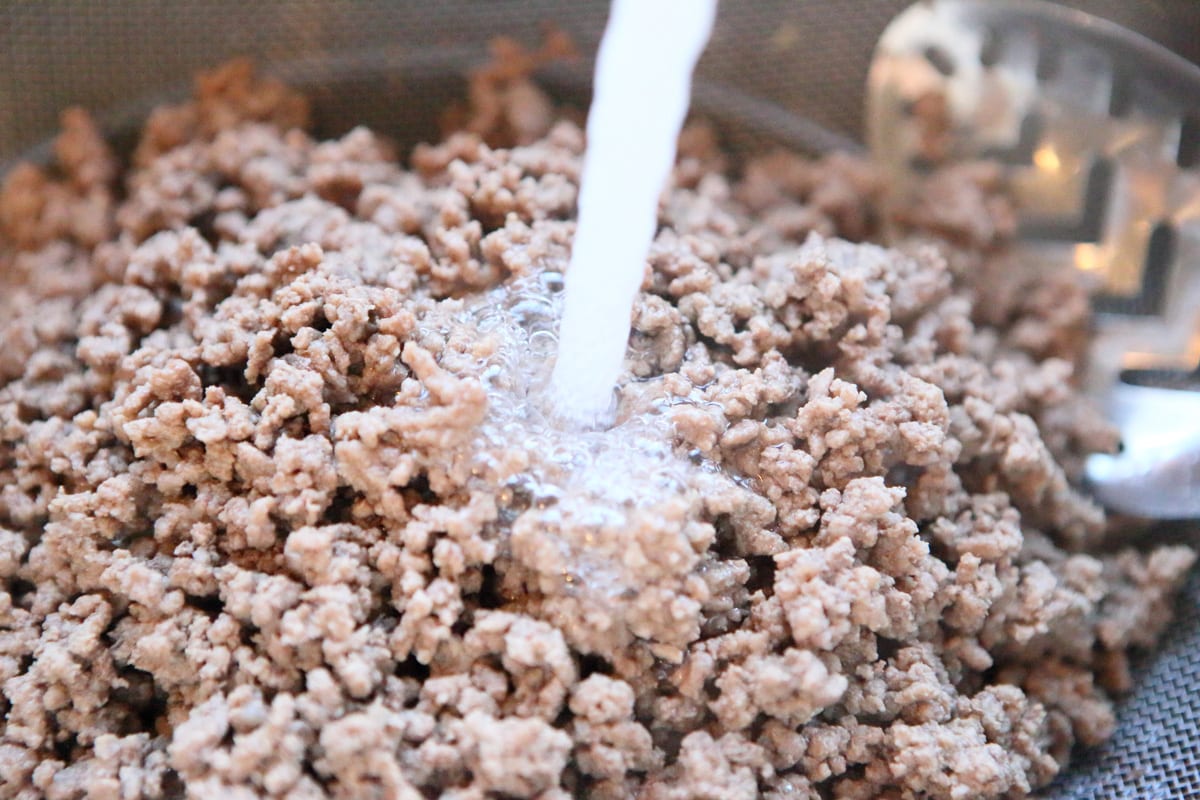
You may have also been told to rinse your ground beef after browning it. However, this is not recommended as it can increase foodborne illness risk. Rinsing meat can cause bacteria to spread, which can lead to illness.
If you are concerned about bacteria, cooking your ground beef to the proper temperature is the best way to kill them. Ground beef should be cooked to an internal temperature of 160°F. Use a meat thermometer to check the temperature of your beef before consuming it.
When Should You Drain Ground Beef?
If you have decided to drain your ground beef, then you may be wondering when the best time to do it is.
The best time to drain ground beef is after it has been browned and before it is added to the rest of your recipe. This will help to prevent any unwanted grease or fat from ruining your dish.
The reason is that ground beef releases its oils and fats as it cooks. If you drain it before adding the rest of your ingredients, then you can prevent these oils and fats from being absorbed by the other ingredients. This can help to keep your dish light and healthy.
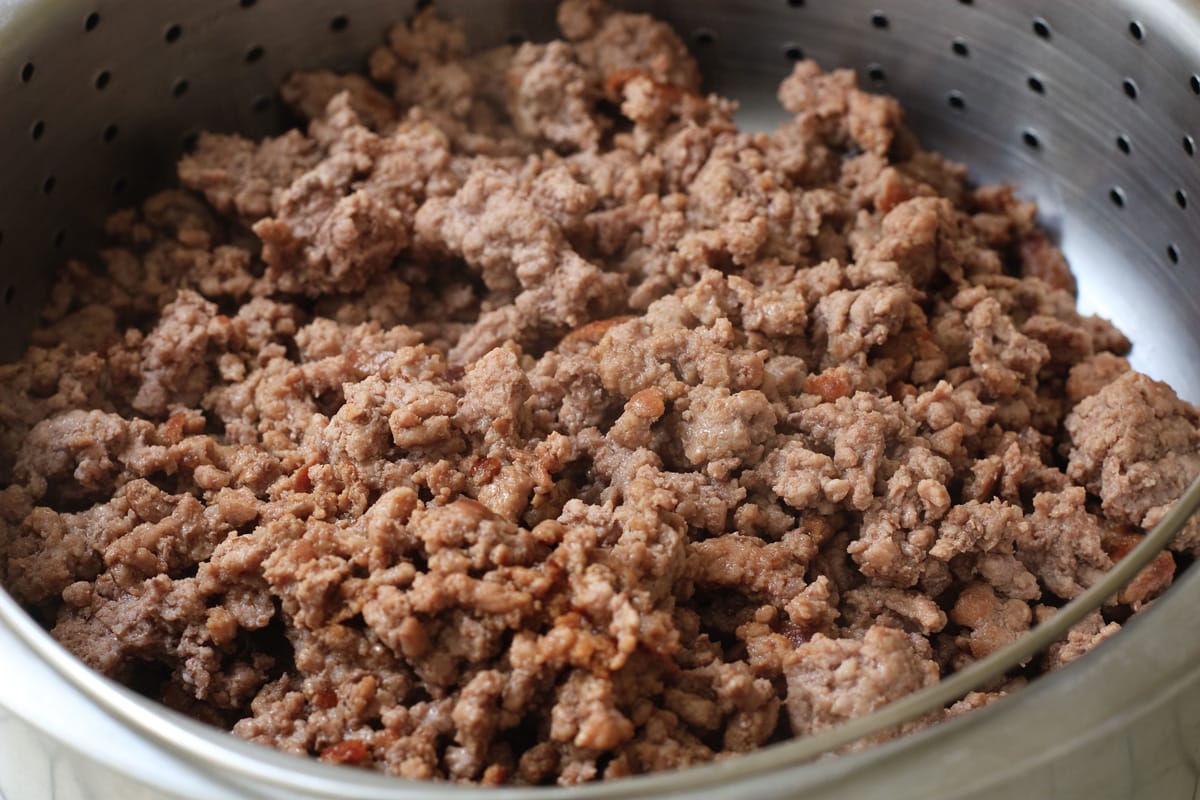
Do You Drain Blood From Ground Beef Packages?
Believe it or not, the red liquid you see in ground beef packages isn't blood. In fact, it's a mixture of water, myoglobin, and fat. Myoglobin is a protein that helps to store oxygen in muscle tissue. It's what gives meat its red color.
The amount of myoglobin in ground beef varies depending on the animal it comes from. For example, beef from older cows tends to have more myoglobin than beef from younger cows. This is why ground beef can range in color from bright red to darker brown.
So no need to stress if you see a little red liquid in your ground beef package. It's perfectly normal!
Why Is My Ground Beef Watery?
If you notice that your ground beef releases a lot of liquid as it cooks, there are a few possible explanations. First, it's important to remember that ground beef is made up of water, myoglobin, and fat. So, it's normal to release some liquid as it cooks.
However, if it is so watery that it seems mushy, then it could be due to the ground beef being handled too much. Overworking the ground beef can cause it to release more liquid and become tough.
In addition, if the ground beef has been left at room temperature for too long, then the liquids can start to separate from the meat. This is why it's important to cook ground beef as soon as possible after purchasing it.
Do You Add Taco Seasoning Before Or After Draining Ground Beef?
Ground beef for tacos can be seasoned in several ways. Some people prefer to add the seasoning before cooking the beef, while others add it after. There is no right or wrong answer, so it depends on your preference.
However, it is better to add it after cooking for juicy and flavorful taco meat. The reason being is that adding any sodium to raw ground beef can cause it to release more water. This can make the beef dry and less flavorful.
If you choose to season your ground beef before cooking, you may need to add moisture back into the meat. This can be done by adding a little beef broth or water to the pan.
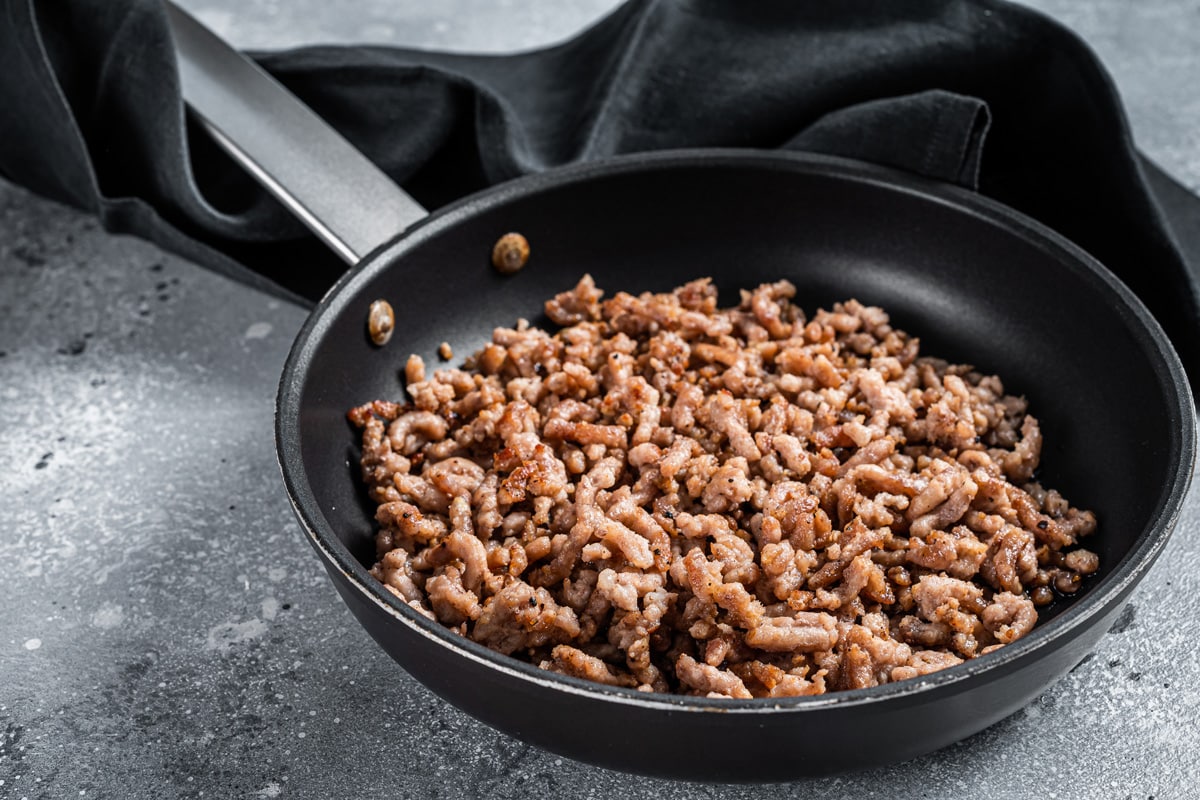
How Do You Make Perfectly Ground Beef?
If you want to make perfectly ground beef, then there are a few things you need to keep in mind. First, it's important to choose the right type of beef. Ground beef can be made from a variety of different cuts of meat, but not all of them are equal.
For the best flavor and texture, look for ground beef that is 80% lean and 20% fat. This will give you the perfect balance of flavor and juiciness.
However, you can go leaner if you prefer. Just keep in mind that the beef will be less flavorful and drier.
Once you pick your ground beef, let it sit at room temperature for at least 15 minutes. This will help it to cook evenly.
When you're ready to cook, be sure to use a light touch when handling the beef. Overworking it can make it tough.
If you don't have a non-stick pan, add a little oil to the pan before cooking the beef. This will help to prevent it from sticking and making a mess.
As your ground beef cooks, break it up with a spatula. Then once it is cooked through, you can drain any excess fat.
Season the beef to taste, and you're done! Enjoy your perfectly cooked ground beef!
Can You Cook Grey Ground Beef?
As long as the ground beef doesn't show any other signs of spoilage, then it is perfectly safe to cook and eat.
The grey color is due to the meat not being exposed to oxygen. This can happen if the ground beef is stored in a vacuum-sealed package or if it was ground in a food processor.
The color doesn't affect the flavor or safety of the meat, so there's no need to worry. However, if it has a foul smell or is otherwise questionable, then it's best to throw it out.
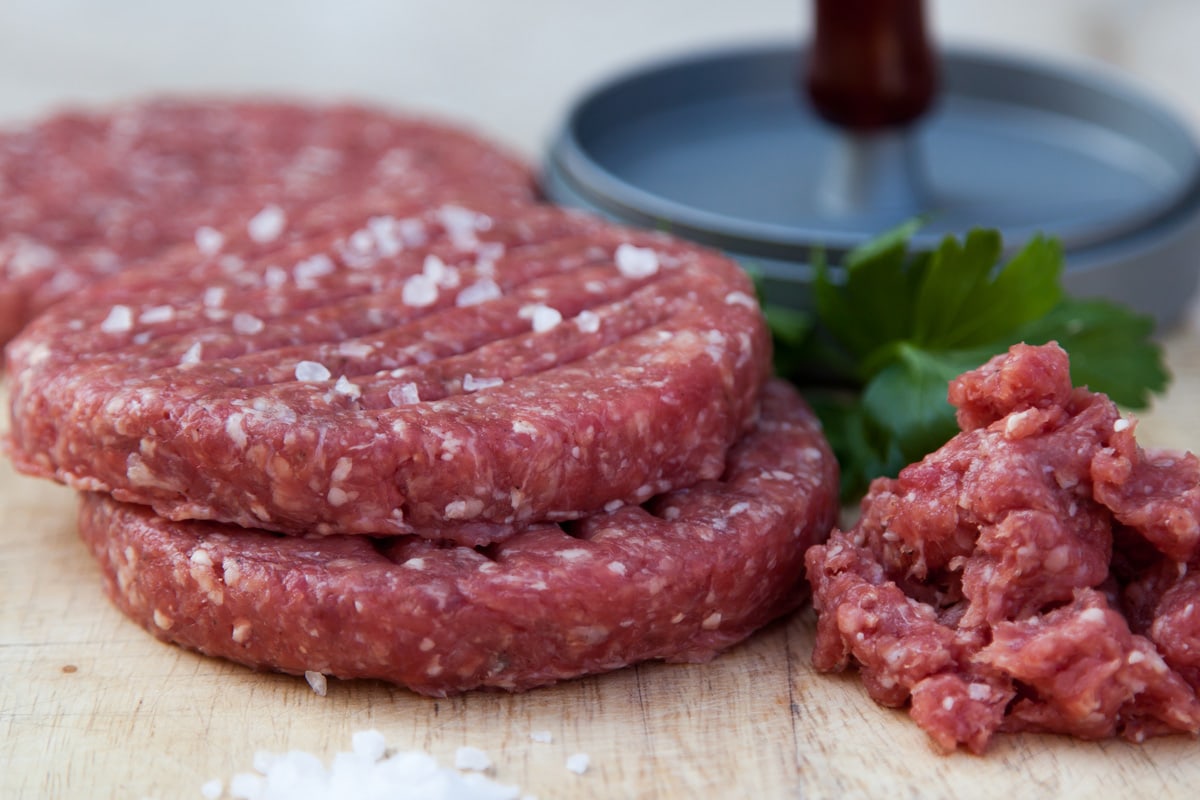
Final Thoughts
By following these tips, you can be sure that your ground beef will turn out perfectly every time. Whether you're making tacos, burgers, or meatloaf, these tips will help create a delicious and juicy dish.
So, don't be afraid to experiment with different seasonings and cooking methods. With a bit of practice, you'll be a pro in no time!
Made it to the end? Here are other articles you might find helpful:
Can You Mix Ground Turkey And Ground Beef?
How To Tell If Ground Beef Is Cooked
What Color Should Ground Turkey Be When Cooked?

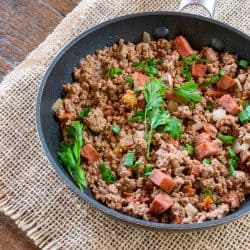

![Raw minced pork sprinkled with salt all over and put over a white paper,Why Is My Ground Beef Chewy? [Does That Mean It Is Bad?]](https://kitchenseer.com/wp-content/uploads/2022/09/Raw-minced-pork-sprinkled-with-salt-all-over-and-put-over-a-white-paper-250x250.jpg)


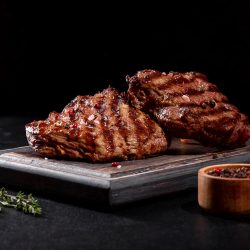
I recently discovered an even better way to drain ground beef. its a specialized colander made just for this purpose. thought you might like to know.